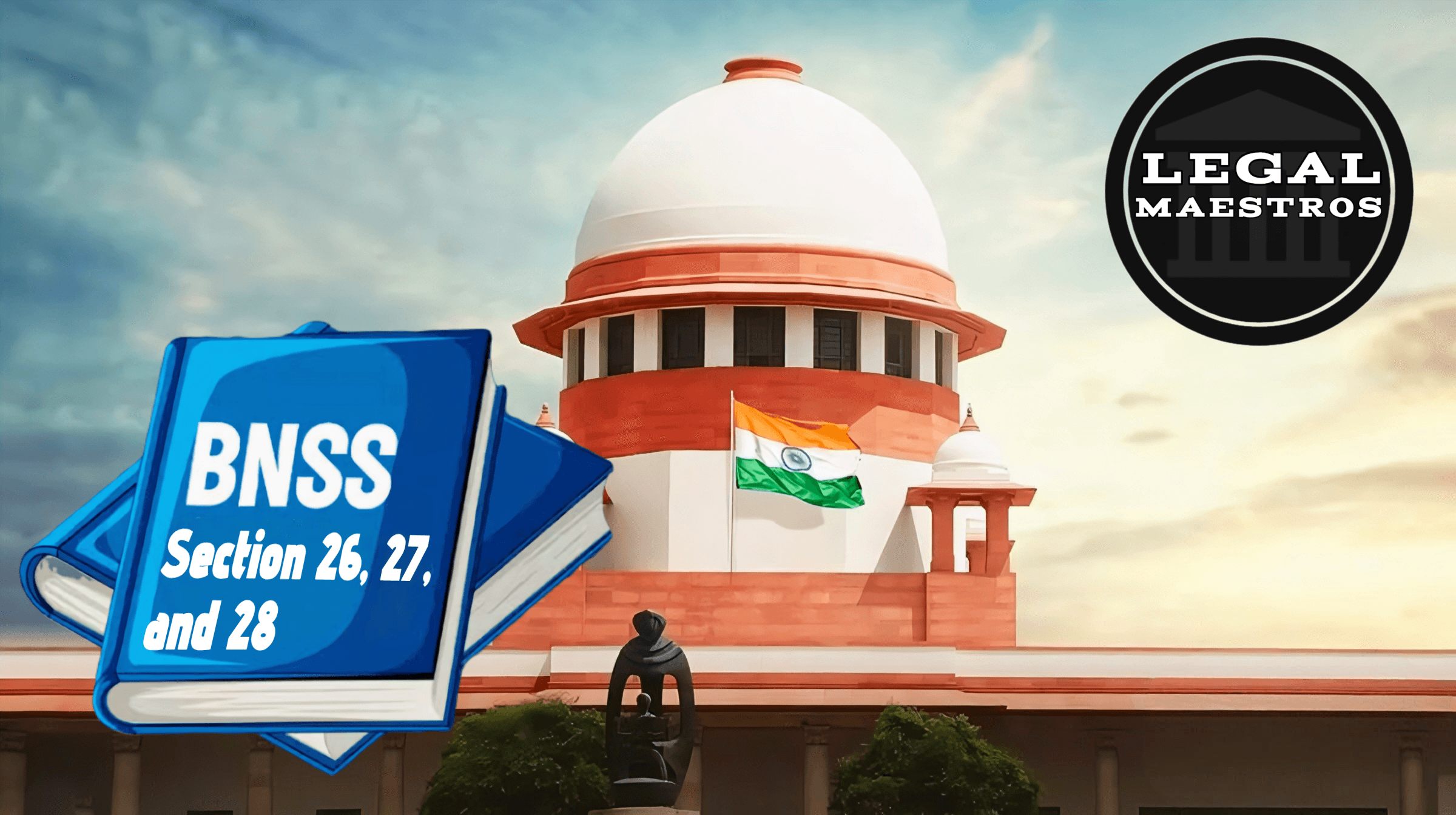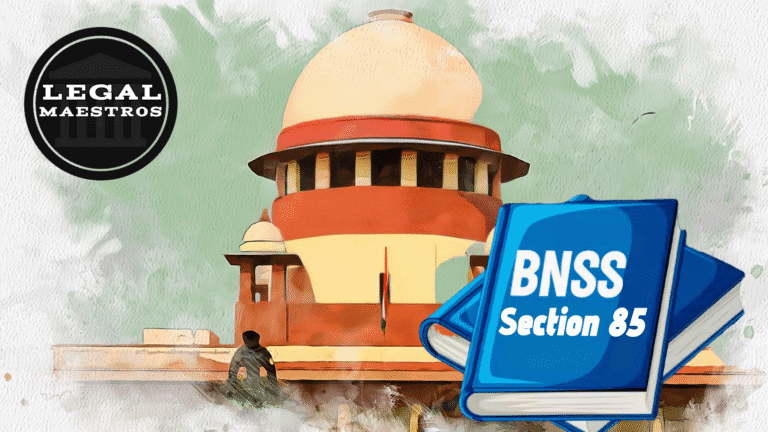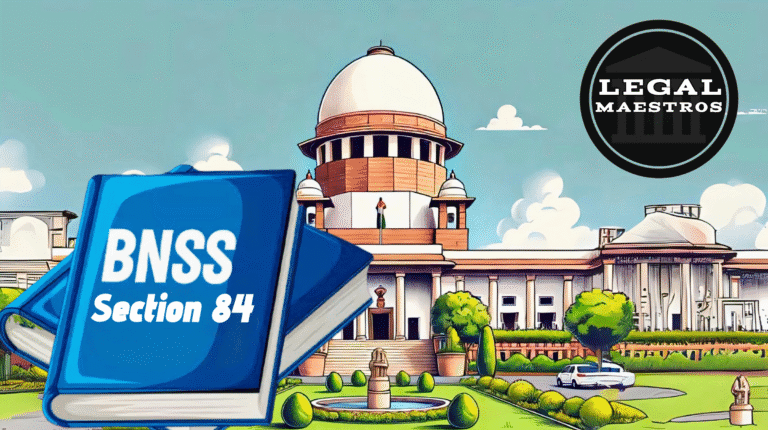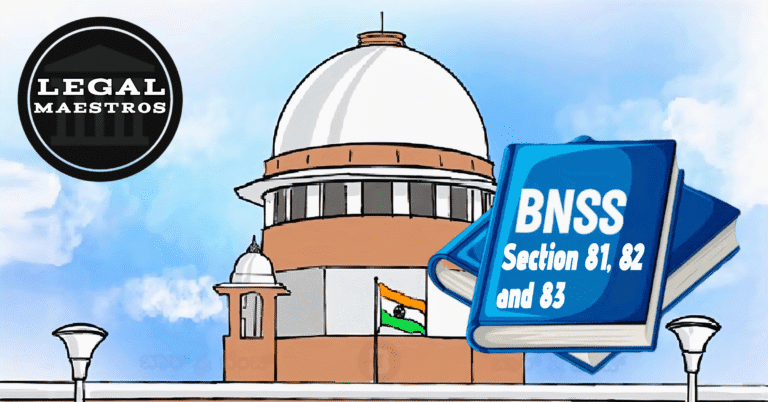
Section 26: Mode of Conferring Powers
In Section 26, the High Court or the State Government is outlined as the entity that has the authority to give powers under the Sanhita. The delegation of these authorities, which are typically associated with judicial or administrative tasks, must be carried out in a manner that is both formal and acknowledged.
Section 1 outlines the procedure that must be followed in order to bestow certain abilities. Both the High Court and the State Government have the authority to issue orders that empower persons, according to this provision. The authority might be bestowed in two distinct ways. On the one hand, by naming the person in question precisely. For instance, if the State Government wishes to bestow particular rights upon Mr. Rakesh Sharma, a particular individual, it is able to include his name in the order. The second way involves the distribution of powers according to the office that is held. Instead of mentioning a specific individual, this indicates that the authority can be delegated to a particular office or category of officials. As an illustration, under this Sanhita, it is possible that all Deputy Superintendents of Police in a district may be granted particular rights just due to the fact that they hold that office.
In this way, the system is guaranteed to be flexible. It is not necessary for the government or the High Court to issue a new order each time a new individual takes office. The powers are inextricably linked to the office, and they are universally applicable to the individual who holds that post.
For any queries or to publish an article or post or advertisement on our platform, do call at +91 6377460764 or email us at contact@legalmaestros.com.
The conditions under which such rights are exercised are elucidated in subsection (2) of section 26. It states that the date on which the order is delivered to the individual who is being empowered serves as the date on which these abilities become effective. In other words, even if the order is signed and dated earlier, the officer will not be able to exercise those powers until the communication has been properly delivered to them.
Example: [Figure] Imagine for a moment that on June 1st, the High Court makes an order that gives Mr. Arvind Kumar, who is a Sessions Judge, the authority to take cognizance of certain offenses. On the other hand, if Mr. Kumar receives the order on June 5, he will not be able to begin using those powers until June 5, and not until June 1. Because of this provision, the officer is guaranteed to be aware of the powers that have been granted to them before they are used.
Section 27: Powers of Officers Appointed
When an official is appointed to another post within the same State Government and local area, whether it be an equivalent or higher position, Section 27 makes reference to the continuity of powers that the officer possesses.
For any queries or to publish an article or post or advertisement on our platform, do call at +91 6377460764 or email us at contact@legalmaestros.com.
The most important thing to keep in mind is that once powers have been granted to an officer, such rights do not immediately become revoked if the officer is transferred or promoted within the same administrative structure and geographical area. To the extent that the High Court or the State Government does not expressly withdraw the powers, they will continue to exist.
In order for this rule to be enforced, it is necessary to fulfill a number of prerequisites. To begin, the individual must have been approved by the High Court or the State Government to use the powers that are conferred by the Sanhita. A second need is that the individual in question must be assigned to a position of equal or higher rank. Third, the new position must be located within a local area that is comparable and falls under the jurisdiction of the same state government. In the event that these conditions are met, the individual will continue to possess the powers that were authorized earlier.
The clause, on the other hand, empowers the High Court or the State Government to make a direction that prevents the continuation of these powers in the new office. This provision is included in the section. This indicates that the authorities have the authority to suspend the continuation of powers if they deem it necessary, despite the fact that the default rule permits the continuation of powers with no restrictions.
For any queries or to publish an article or post or advertisement on our platform, do call at +91 6377460764 or email us at contact@legalmaestros.com.
In accordance with this Sanhita, Mr. Suresh Patel, who serves as a Chief Judicial Magistrate in District A, has been bestowed with a set of specialized powers by the High Court. Subsequently, he is elevated to the position of District Judge and moved to District B. Mr. Patel will continue to exercise the same rights unless the High Court has clearly said differently in its order. This is due to the fact that District B is under the jurisdiction of the same State Government, and his new office is of a higher rank.
It is because of this provision that administrative continuity is met. However, officers do not suddenly lose their powers as a result of being transferred or promoted, which would otherwise result in confusion and disruptions in the functioning of the organization.
For More Updates & Regular Notes Join Our Whats App Group (https://chat.whatsapp.com/DkucckgAEJbCtXwXr2yIt0) and Telegram Group ( https://t.me/legalmaestroeducators )
For any queries or to publish an article or post or advertisement on our platform, do call at +91 6377460764 or email us at contact@legalmaestros.com.
Section 28: Withdrawal of Powers
In accordance with Section 28, the High Court and the State Government are granted the right to revoke powers that were previously granted to them by the Sanhita. Within this section, there are two sub-sections that are dedicated to discussing this procedure.
The High Court or the State Government has the authority to revoke all or some of the rights that have been granted to any individual or group of individuals, as stated in the first paragraph of the section. It is possible for the authority that bestowed these rights to revoke them either directly or through officers who are subordinate to that level of authority. This grants the authority that grants power complete control over the choice that it has made, including the capacity to alter or reverse it if it becomes necessary to do so.
This provision is essential because there are circumstances in which a person may abuse their authority or, alternatively, may no longer be qualified to carry out the obligations that they have been given. In these kinds of situations, there needs to be a system in place that can swiftly and lawfully withdraw the powers.
For any queries or to publish an article or post or advertisement on our platform, do call at +91 6377460764 or email us at contact@legalmaestros.com.
In accordance with the provisions of subsection (2), the Chief Judicial Magistrate or the District Magistrate are granted extra authority. It declares that any rights that were granted by either of these officials can be revoked by the same authority who granted them in the first place. This makes it possible to exercise a greater degree of control over powers at the local level, which is beneficial for day-to-day government and judicial administration.
Suppose, for the sake of illustration, that the District Magistrate grants the Sub-Divisional Magistrate (SDM) the authority to carry out specific emergency actions in accordance with this Sanhita. Later on, the District Magistrate discovers that the SDM is not carrying out their responsibilities in a responsible manner. Under these circumstances, the District Magistrate has the right to revoke those powers without the necessity for authorization from a higher authority.
To guarantee responsibility, this part is included. After it has been bestowed, power is not unchangeable. Both the concepts of good governance and the rule of law are supported by the fact that it is possible to review and revert it if it is deemed necessary.
For any queries or to publish an article or post or advertisement on our platform, do call at +91 6377460764 or email us at contact@legalmaestros.com.




![Research Assistantship @ Sahibnoor Singh Sindhu, [Remote; Stipend of Rs. 7.5k; Dec 2025 & Jan 2026]: Apply by Nov 14, 2025!](https://legalmaestros.com/wp-content/uploads/2025/11/Gemini_Generated_Image_s0k4u6s0k4u6s0k4-768x707.png)
![Karanjawala & Co Hiring Freshers for Legal Counsel [Immediate Joining; Full Time Position in Delhi]: Apply Now!](https://legalmaestros.com/wp-content/uploads/2025/11/Gemini_Generated_Image_52f8mg52f8mg52f8-768x711.png)
![Part-Time Legal Associate / Legal Intern @ Juris at Work [Remote]: Apply Now!](https://legalmaestros.com/wp-content/uploads/2025/11/ChatGPT-Image-Nov-12-2025-08_08_41-PM-768x768.png)
![JOB POST: Legal Content Manager at Lawctopus [3-7 Years PQE; Salary Upto Rs. 70k; Remote]: Rolling Applications!](https://legalmaestros.com/wp-content/uploads/2025/11/ChatGPT-Image-Nov-12-2025-08_01_56-PM-768x768.png)
2 thoughts on “A Guide to Sections 26, 27, and 28 of the Bharatiya Nagarik Suraksha Sanhita, 2023 on Delegation and Withdrawal of Officer Powers”